Friday, May 28, 2010
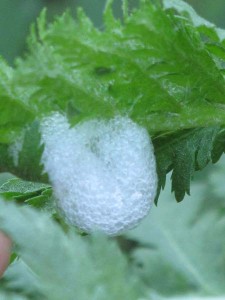
Above: Froth on a tansy plant in Bonnefont garden on a May morning. ??In the Middle Ages, this foamy substance was believed to be the spittle of the cuckoo. The froth is secreted by insects known as spittle bugs.
The cuckoo-spittle, gowk’s-spittle, cuckoo’s-spittens, frog-spit, toad-spit, snake’s-spit, or wood-sear, of England and Scotland; Kukuk-speichel, and hexenspiechel (witch’s spit) of the Germans; gugger-speu of the Swiss; gred-spott (frog-spit) of the Swedes; giogespit of the Danes; trold-kiaringspye of the Norwegians; and crachat de coucou of the French . . .
???James Hardy, “Popular History of the Cuckoo.” In The Folk-lore record, Vol. 2. London: Nichols & Sons, 1879.
Read more »
Tags: April, cattle, cuckoo, Cuculus canorus, death, fairy, froghopper, froth, larva, May, nymph, saliva, sexuality, snake, spittle, witch
Posted in Botany for Gardeners | Comments (2)
Friday, May 8, 2009

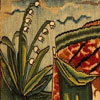
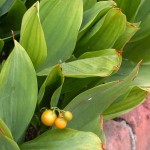
Above, from left to right: Detail of a potted lily of the valley forced for early display in Cuxa cloister; Detail of the tapestry The Queen of Sheba before King Solomon from Two Riddles of the Queen of Sheba; Lily of the valley fruiting in Bonnefont Garden in late summer.
I am the flower of the field,
And the lily of the valleys.
As the lily among thorns, so is
My love among the daughters.
???Canticle of Canticles (Song of Songs) 2:1-2
The lily and the rose are the chief adornments of the allegorical hortus conclusus, the enclosed garden of the Virgin rooted in the language of the Song of Songs in the Old Testament. Read more »
Tags: Convallaria majalis, lily of the valley, May, Solomon and Sheba, Song of Songs, Virgin
Posted in Gardening at The Cloisters, Medicinal Plants, Plants in Medieval Art | Comments (2)
Friday, May 1, 2009
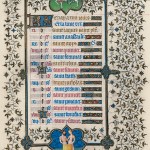
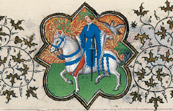
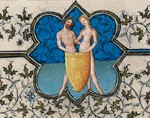
Above, from left to right: Calendar page for May, from The Belles Heures of Jean de France, Duc de Berry, 1405???1408/1409. Pol, Jean, and Herman de Limbourg (Franco-Netherlandish, active in France, by 1399???1416). French; Made in Paris. The Metropolitan Museum of Art, New York, The Cloisters Collection, 1954 (54.1.1); detail of the activity for the month; detail of the zodiacal symbol Gemini. See the Collection Database to learn more about this work of art.
Riding or walking, in companies of green-clad couples like the courtiers of King Arthur or the Duke de Berry, or by twos, or all alone, like the Dreamer of the Roman de la Rose or the falconer of the Belles Heures, there are many variations on the medieval set piece of the May morning???s outing to the greenwood.
Read more »
Tags: Belles Heures, Crataegus monogyna, hawthorn, May, maying
Posted in The Medieval Calendar | Comments (2)







